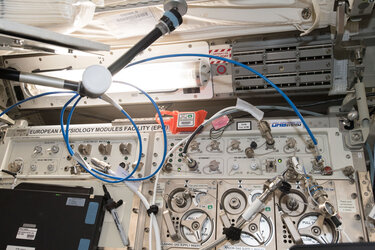Accept all cookies Accept only essential cookies See our Cookie Notice

About ESA
The European Space Agency (ESA) is Europe’s gateway to space. Its mission is to shape the development of Europe’s space capability and ensure that investment in space continues to deliver benefits to the citizens of Europe and the world.
Highlights
ESA - United space in Europe
This is ESA ESA facts Member States & Cooperating States Funding Director General Top management For Member State Delegations European vision European Space Policy ESA & EU Space Councils Responsibility & Sustainability Annual Report Calendar of meetings Corporate newsEstablishments & sites
ESA Headquarters ESA ESTEC ESA ESOC ESA ESRIN ESA EAC ESA ESAC Europe's Spaceport ESA ESEC ESA ECSAT Brussels Office Washington OfficeWorking with ESA
Business with ESA ESA Commercialisation Gateway Law at ESA Careers Cyber resilience at ESA IT at ESA Newsroom Partnerships Merchandising Licence Education Open Space Innovation Platform Integrity and Reporting Administrative Tribunal Health and SafetyMore about ESA
History ESA Historical Archives Exhibitions Publications Art & Culture ESA Merchandise Kids Diversity ESA Brand Centre ESA ChampionsLatest
Space in Member States
Find out more about space activities in our 23 Member States, and understand how ESA works together with their national agencies, institutions and organisations.
Science & Exploration
Exploring our Solar System and unlocking the secrets of the Universe
Go to topicAstronauts
Missions
Juice Euclid Webb Solar Orbiter BepiColombo Gaia ExoMars Cheops Exoplanet missions More missionsActivities
International Space Station Orion service module Gateway Concordia Caves & Pangaea BenefitsLatest
Space Safety
Protecting life and infrastructure on Earth and in orbit
Go to topicAsteroids
Asteroids and Planetary Defence Asteroid danger explained Flyeye telescope: asteroid detection Hera mission: asteroid deflection Near-Earth Object Coordination CentreSpace junk
About space debris Space debris by the numbers Space Environment Report In space refuelling, refurbishing and removingSafety from space
Clean Space ecodesign Zero Debris Technologies Space for Earth Supporting Sustainable DevelopmentLatest
Applications
Using space to benefit citizens and meet future challenges on Earth
Go to topicObserving the Earth
Observing the Earth Future EO Copernicus Meteorology Space for our climate Satellite missionsCommercialisation
ESA Commercialisation Gateway Open Space Innovation Platform Business Incubation ESA Space SolutionsLatest
Enabling & Support
Making space accessible and developing the technologies for the future
Go to topicBuilding missions
Space Engineering and Technology Test centre Laboratories Concurrent Design Facility Preparing for the future Shaping the Future Discovery and Preparation Advanced Concepts TeamSpace transportation
Space Transportation Ariane Vega Space Rider Future space transportation Boost! Europe's Spaceport Launches from Europe's Spaceport from 2012Latest

A dose of Moonlight
Thank you for liking
You have already liked this page, you can only like it once!
An orange pouch and a yellow cable are paving the way for missions to the Moon. By monitoring space radiation and enabling faster communications, the Dosis-3D experiment and the Columbus Ka-band or ColKa terminal, respectively, are providing the insights needed to enable safer missions father out in space.
Orange Dosis-3D pouches are everywhere in the Columbus laboratory on the International Space Station. A series of active and passive dosimeters, they measure space radiation inside the module as well as how it penetrates the Space Station’s walls.
Radiation levels on board the International Space Station are up to 200 times higher than on Earth. As soon as humans leave the protective shield that is Earth’s atmosphere, space radiation becomes a serious concern.
The Columbus module is monitored by 11 passive dosimeters. The dosimeters are about the size of a pack of playing cards and attach to the walls of Columbus with Velcro. The detectors record how much radiation has been absorbed in total during the period they are in space.
This experiment has been monitoring radiation levels for a number of years and after each six-month crew rotation, the detectors are replaced to record changes in radiation.
In addition to the passive detectors, Dosis-3D uses active dosimeters that measure fluctuations in radiation levels over time. Data from all Station partners is shared to create as complete a picture of space radiation as possible.
Dosimeters will also be flown on the Gateway, the next human habitat to be built in the vicinity of the Moon, to generate a more accurate assessment of radiation in lunar orbit.
Meanwhile, the ColKa communications terminal visible in this image, will connect the Columbus module to the European Data Relay System satellites in geostationary orbit that transfer data via European ground stations. ColKa was installed during a recent spacewalk and began commissioning this week. It will enable faster uplink and downlink speeds between the European segment of the Space Station and European researchers on the ground.
The know-how gained from designing, building and running ColKa could potentially be used in exploring farther from Earth in the Gateway around the Moon. ESA will supply the ESPRIT module for communications, scientific experiments, and refuelling for the international lunar outpost.
These ambitious plans require reliable navigation and telecommunication capabilities to succeed. Building these independently would be costly, complex and inefficient.
If this work were outsourced to a consortium of space companies that could put a constellation of satellites around the Moon, each individual mission would become more cost-efficient.
As part of an initiative called Moonlight, ESA is now conducting deep analyses of the planned lunar missions and further developing possible solutions, both technical and business-related, to provide telecommunications and navigation services for the Moon.
-
CREDIT
ESA/NASA -
LICENCE
ESA Standard Licence

Dosis-3D radiation monitor

Dosis radiation monitor

Satoshi Dosimeters

Hidden science















 Germany
Germany
 Austria
Austria
 Belgium
Belgium
 Denmark
Denmark
 Spain
Spain
 Estonia
Estonia
 Finland
Finland
 France
France
 Greece
Greece
 Hungary
Hungary
 Ireland
Ireland
 Italy
Italy
 Luxembourg
Luxembourg
 Norway
Norway
 The Netherlands
The Netherlands
 Poland
Poland
 Portugal
Portugal
 Czechia
Czechia
 Romania
Romania
 United Kingdom
United Kingdom
 Slovenia
Slovenia
 Sweden
Sweden
 Switzerland
Switzerland

























